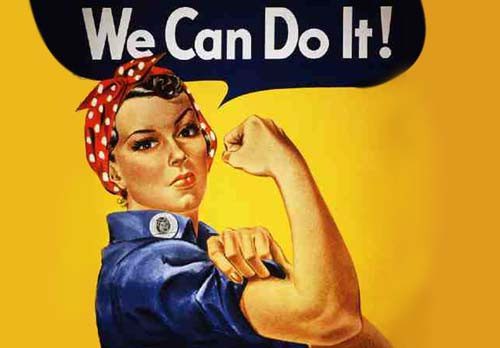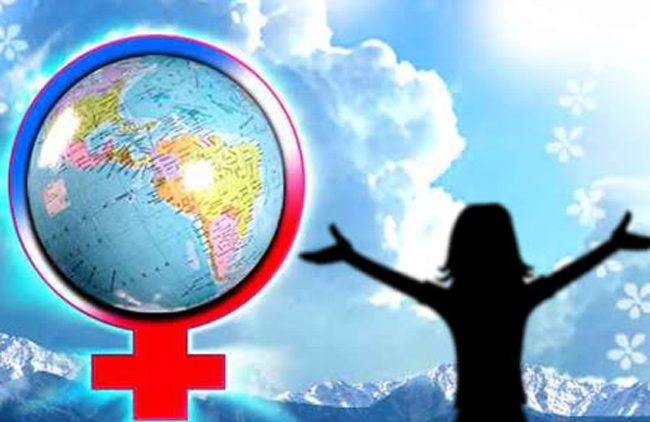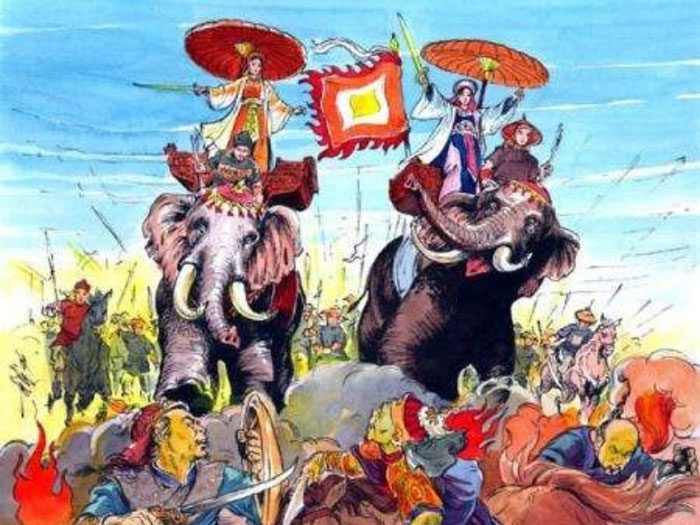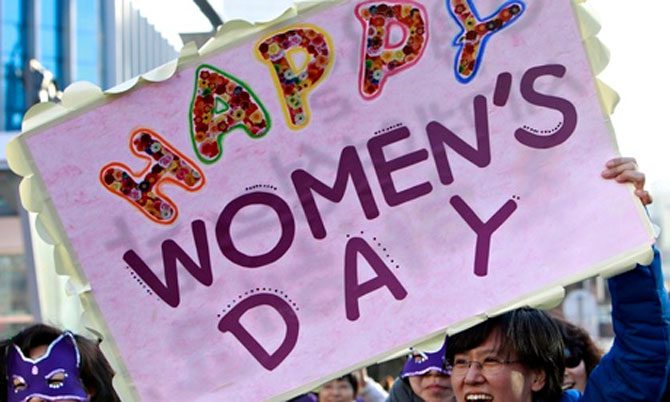On March 8th each year, women around the world are celebrated by all of humanity. However, not everyone understands what March 8th signifies, its origins, and its meaning.
The History of International Women’s Day
The history of International Women’s Day on March 8th began with the struggle for rights by female workers in the United States.
In the late 19th century, capitalism was rapidly developing, particularly in the United States. The industrial sector expanded, attracting many women and children to work in factories and enterprises. Capitalist owners exploited the labor of women and children, paying them meager wages, which led to dire living conditions for these groups. Outraged by this brutal oppression, on March 8, 1899, in the cities of Chicago and New York, a strong protest emerged from female textile workers demanding higher wages and shorter working hours.

Global Women’s Rights Protest.
Despite facing severe repression, arrests, and being expelled from factories, the women remained united and resilient in their struggle, forcing capitalist owners to make concessions. This victory encouraged the fighting spirit of American working women. By February 1909, women across the United States organized the first “Women’s Day” with large rallies and protests demanding equal rights for women. In New York, 3,000 women attended a meeting opposing the government’s recognition of women’s voting rights.
These initial struggles of American women had a significant impact, serving as a powerful source of inspiration for the labor movement of women worldwide. During this struggle, two remarkable revolutionary women emerged: Clara Zetkin (from Germany) and Rosa Luxemburg (from Poland). They collaborated with Nadezhda Krupskaya (wife of Lenin) to advocate for the establishment of the International Women’s Secretariat to lead the movement.
In response to the growing number and quality of women’s movements globally, the second international women’s conference was convened in Copenhagen (the capital of Denmark) on August 26 and 27, 1910, with 100 female delegates from 17 countries, who decided to designate March 8 as International Women’s Day with the goal of fighting for the rights of women and children.

An eight-hour workday. Equal work, equal pay. Protection for mothers and children.
Since then, March 8 has become a day of celebration for women worldwide, united in their struggle for self-liberation and the realization of gender equality. Women across the globe now celebrate March 8 with diverse activities and forms.
The focus of International Women’s Day on March 8 has expanded beyond equality to include new concepts of “development” and “gender.” The issue of women has been recognized and assessed comprehensively by many nations worldwide through a series of global conferences. Since the 1970s, there have been four world conferences on women:
- The first conference held in Mexico in 1975, marking the beginning of the decade for women.
- The second conference held in Copenhagen (Denmark) in 1980.
- The third conference held in Nairobi (Kenya) in 1985, where the “Forward-looking Strategy for the Advancement of Women” was adopted.
- The fourth conference held in Beijing (China) in 1995.

The world conferences on women organized by the United Nations are significant international events for the political life of the entire world, especially for women. Therefore, the issue of women’s liberation and progress is a global concern.
The goal of the Beijing Conference was to review the implementation of the “Forward-looking Strategy for the Advancement of Women” established at the Nairobi Conference and the United Nations convention “Elimination of All Forms of Discrimination Against Women” (CEDAW), while also adopting the “Global Action Platform for the Advancement of Women by 2000.”
“The Beijing Declaration” and “The Global Action Platform for the Advancement of Women by 2000” are the two most important documents from the Beijing Conference. These documents outline the obstacles in the struggle for gender equality alongside men; they also affirm the commitments and determination of governments and international organizations to achieve the goals of equality, development, and peace for the advancement of women.
International Women’s Day in Vietnam
In line with that commitment, on October 4, 1997, our government issued Decision No. 822/TTG approving the National Action Plan for the Advancement of Women, establishing 11 goals for women’s advancement by the year 2000 to commit to the world on actions for the advancement of Vietnamese women in achieving the goal of “Action for Equality, Development, and Peace” from the Beijing Conference.

In Vietnam, March 8 also commemorates the uprising of the Trung Sisters, the first female national heroes who expelled foreign invaders from the North, reclaiming national sovereignty. The pride and determination of Vietnamese women partly stem from this unique national tradition.
In the spring of 40 AD, the Trung Sisters raised the flag of rebellion and received enthusiastic support from local leaders and patriots across various districts, with a large number of women participating in the uprising.
With widespread support from various forces, the uprising of the Trung Sisters spread widely. Under the brilliant leadership of the Trung Sisters, the uprising achieved victory, dismantling the occupying government and forcing General To Dinh to disguise himself, cut his hair, and shave his beard to escape back to his homeland.

After the successful uprising, Trung Trac was proclaimed queen by the generals and the people. She ascended to the throne, taking the reign name Trung Nu Vuong; establishing her capital in Me Linh (currently Me Linh District, Vinh Phuc Province).
In 42 AD, the Han dynasty invaded Vietnam again. The Trung Sisters once again took up arms, raising the flag of rebellion to protect the country. However, due to the vast power difference with the enemy, the uprising lasted only two years. The Trung Sisters heroically sacrificed themselves to defend their nation.
The victory of the Trung Sisters’ uprising is regarded as an immortal epic, showcasing the spirit of independence and national pride. Furthermore, this uprising serves as a testament to the strength of Vietnamese women throughout human history in the cause of building and defending their homeland.
On March 8, 1965, recognizing the contributions of women in the South, the Party, government, and President Ho Chi Minh awarded a banner embroidered with the golden words “Heroic – Unyielding – Loyal – Capable” and the State bestowed the first-class “Solidarity Medal” to the women of the South.

Currently, in Vietnam, women make up 51% of the workforce and play a key role in household duties and child-rearing. Among the representatives in the Vietnamese National Assembly, the highest governing body, women account for 27.3%, and the United Nations has evaluated that “Vietnamese women participate in political activities at the highest rate in the world.” Vietnam has a female university graduation rate of 36.24%, master’s degrees at 33.95%, and doctoral degrees at 25.96%.
In Vietnam, to honor the women, who represent half of the world, celebrations are often organized with great formality, filled with flowers and well wishes. March 8 is also a day for men to express their care and affection for the women they cherish.
Significance of International Women’s Day

Out of the 365 days in a year, women have a special day dedicated to them, where society acknowledges their sacrifices and challenges in life. They often silently sacrifice and endure hardships to build family happiness. Therefore, they deserve even more respect and attention from the other half of the world, sharing the difficulties they face in both work and family life.
No one can deny the great roles and responsibilities of modern women: they are homemakers, they participate in social labor, contributing their strength to the development of the country. Moreover, they uphold the noble duty of being a mother, bearing and raising children into responsible individuals. Today’s women are gradually asserting themselves as the fairer sex and no longer as the weaker sex of the past.
What Day is International Women’s Day on March 8, 2024?
This year, 2024, March 8 falls on a Friday.




















































